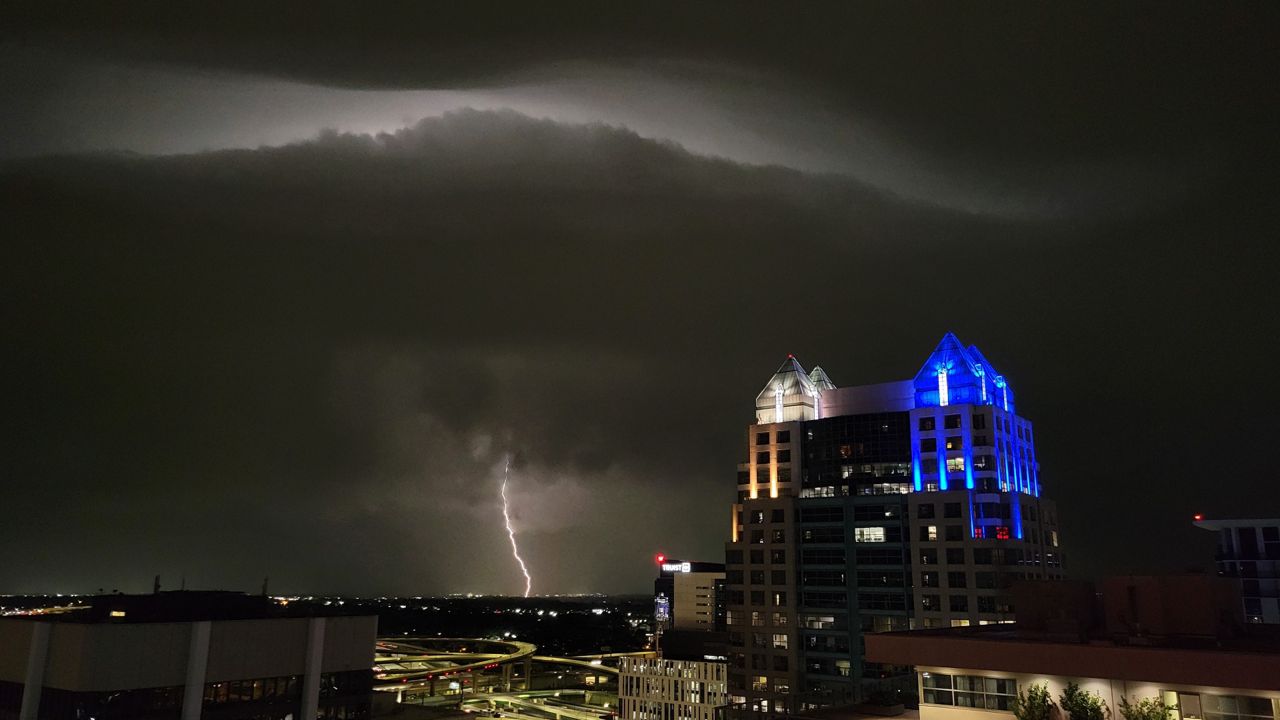After a comfortable spring, temperatures are heating up and moisture is returning. These are the early signs of the transition toward a rainy season.
Most of the Florida peninsula experiences two distinct seasons.
In the mid-fall through late spring, a dry season occurs which features comfortable temperatures and low humidity. In the summer and early fall months, the state experiences rainy season, which has daily storm chances and high humidity.
The transition from dry season to rainy season is typically during the month of May.
In May, moisture from the Atlantic and Gulf waters lifts northward into the region. In addition, the gap between cold fronts increases, and the front becomes weaker and weaker.
This results in an increase in daily rainfall.
At the start of the month, the Orlando International Airport receives 0.09 inches of rainfall per day. By mid-May, the amount only increases to 0.10 inches of rainfall per day.
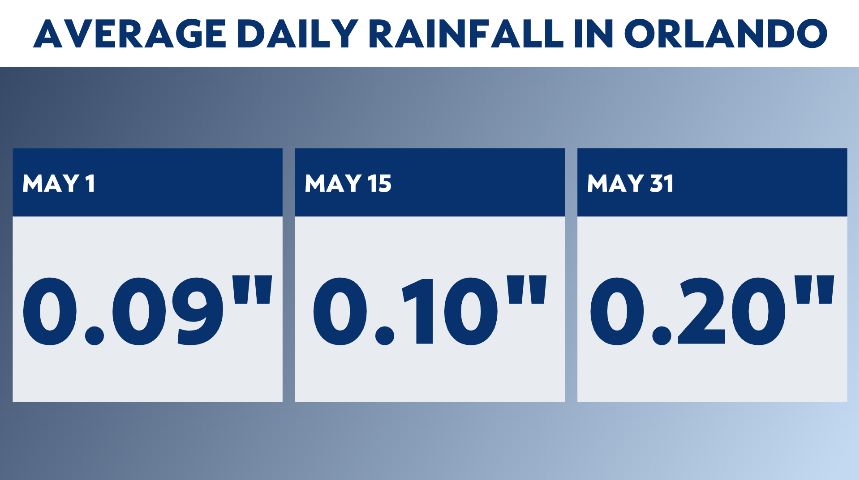
But by May 31, the daily rainfall in Orlando goes up to 0.20 inches per day.
So, what drives the increased rainfall? It’s the sea breezes.
The sea breezes on the Atlantic and Gulf develop between the difference in warming between the land and sea. These sea breezes move inland, lifting air as they do so and creating showers and storms.
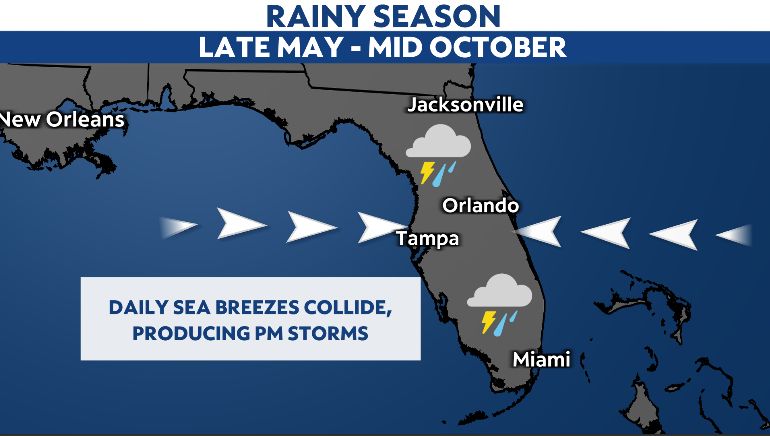
Where the sea breezes collide is often where the storms are the most intense and the rainfall is the greatest. This is often over inland areas of the state.
While there is not an exact start date to rainy season, the transition is normally complete by late May.
On average, May 27 is the start date of rainy season in Orlando and in Sanford. May 28 is the start date for Melbourne, while Daytona Beach normally sees rainy season begin on May 30.
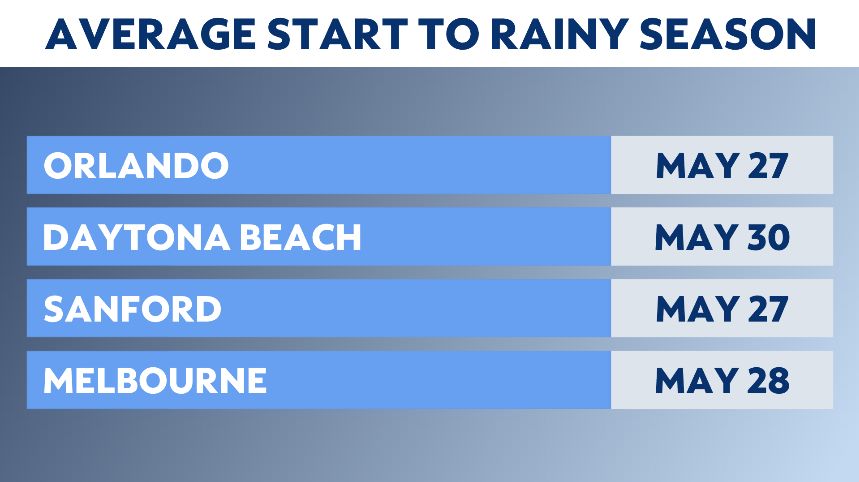
So, will rainy season start even earlier this year? It’s possible, but not likely.
The latest 8-14 day precipitation outlook from the Climate Prediction Center shows near average rainfall for mid-May. This is a sign that an early start to rainy season is not likely, but also can’t be ruled out.
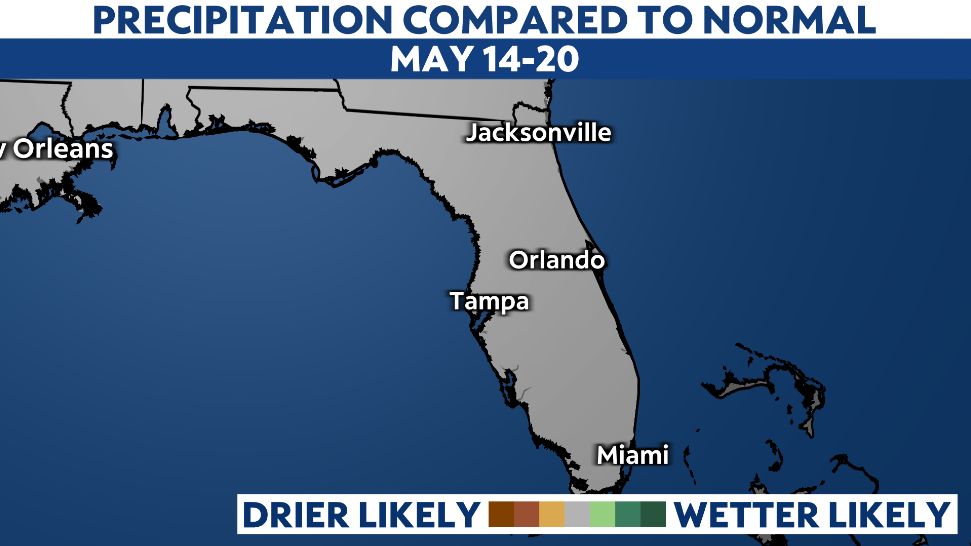
So the dry and somewhat comfortable days are definitely ending across the sunshine state.



